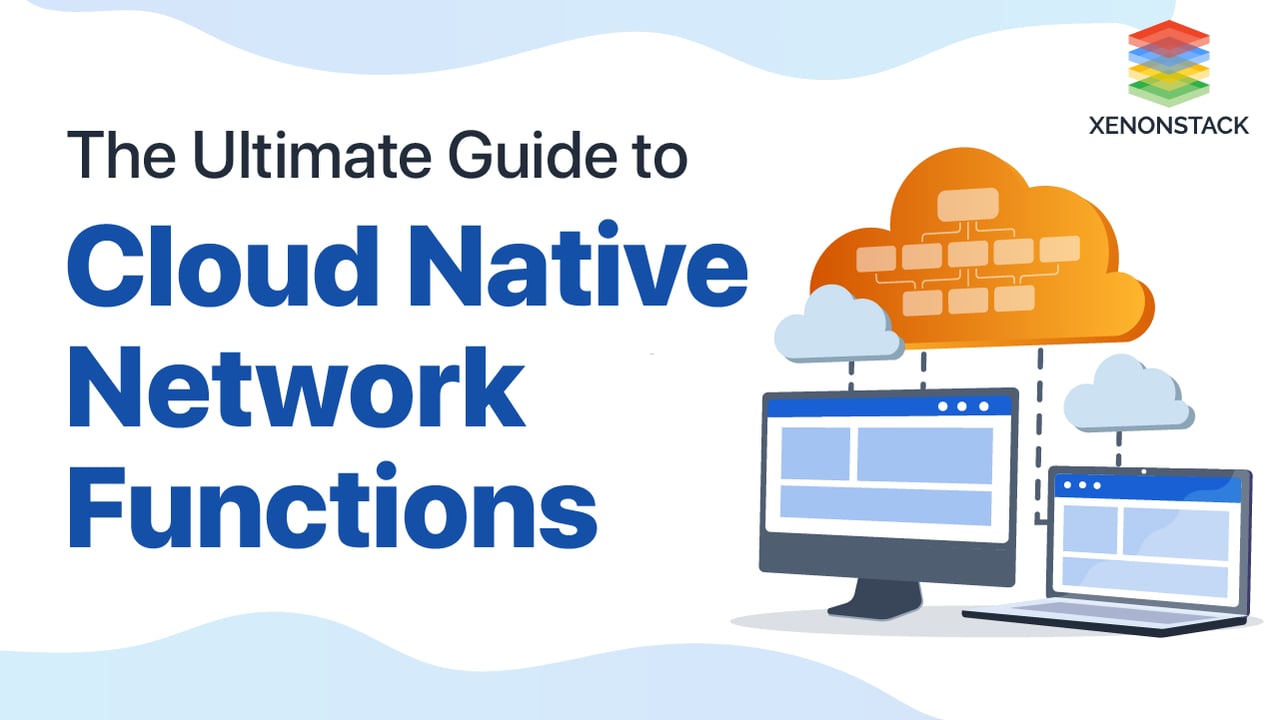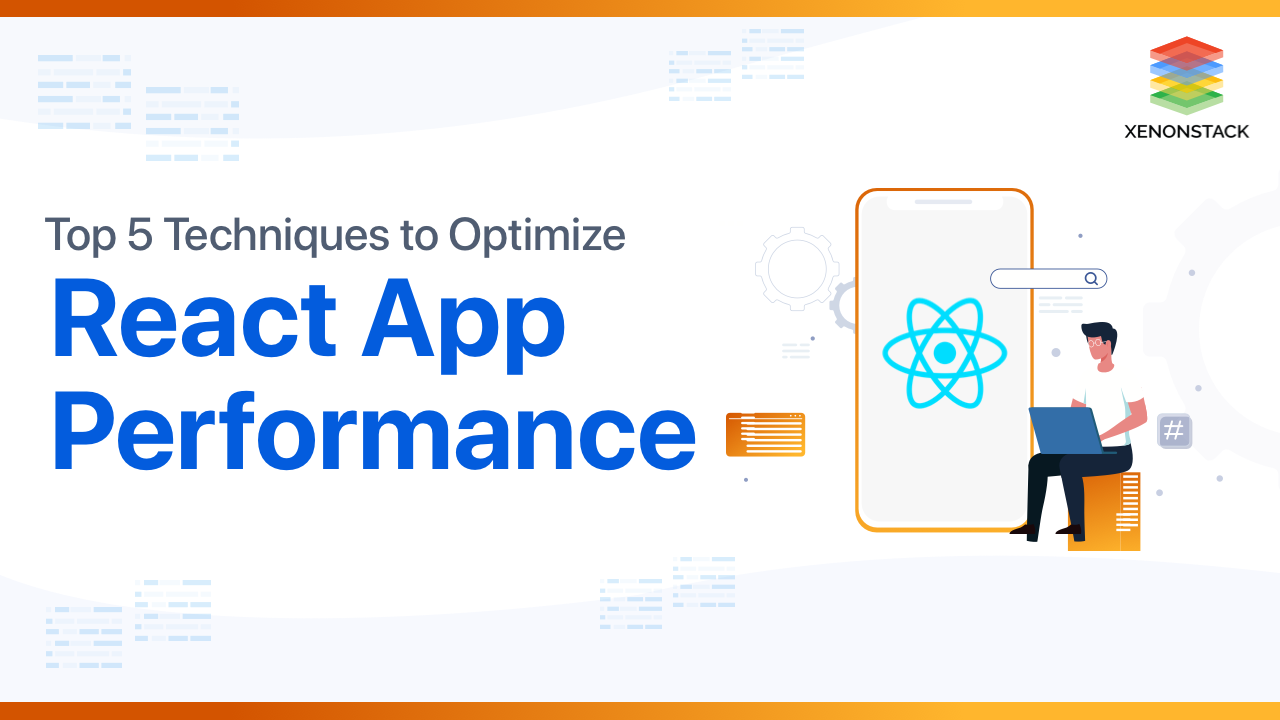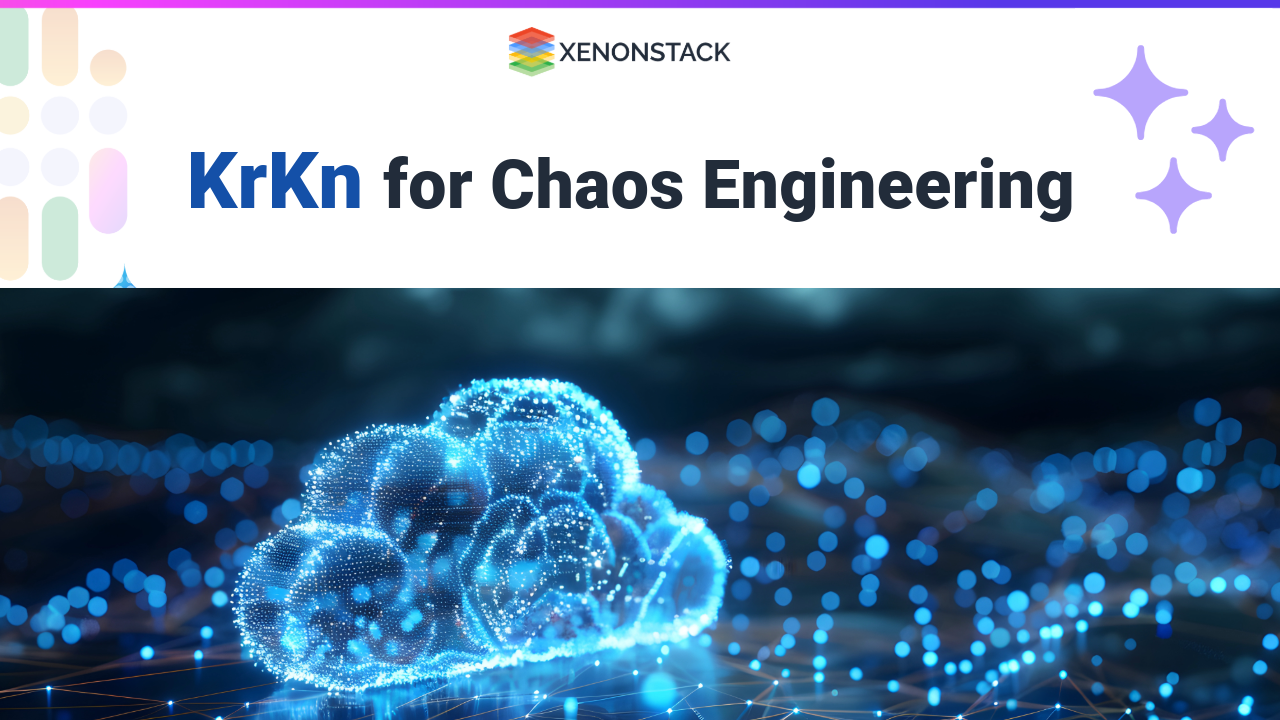
Introduction to Cloud Native Network Functions
A cloud-native network function (CNF) is a service that executes network functions in software rather than dedicated hardware. Because of the huge and low-cost central processing unit and memory resources available in today's server platforms, network operations can be performed using the software.
Cloud-Native technology is the most effective technology in continuously building and operating the world's largest cloud applications. Being cloud-native is the approach to building and running applications that take advantage of the cloud computing model. Cloud-native Applications are a set of small, independent, and loosely coupled services. These are the applications built using the cloud computing model to improve quality and increase speed and flexibility while reducing deployment risk. It is an approach that focuses on how the applications are built, deployed, and managed. No wonder why the introduction of Cloud-Native Network Traffic Management in Cloud-Native Applications was the need of the hour!
The main components of cloud native network functions are:
- Cloud-Native Design
- Microservices Architecture
- Network Agility
- Automation
The Essential things every Enterprise must know while building Cloud Native Applications
Cloud-Native Architecture
Organizations adopt the cloud computing model to extend the scalability and availability of apps. These benefits are achieved through the on-demand provisioning of resources and automation of the application life cycle from development to production. But a new sort of development is required to utilize these benefits completely. Cloud-native application development fulfills this requirement. It is an approach to build and update apps quickly while continuously improving the quality and reducing the risk. More specifically, it’s an approach to creating and running responsive, scalable, and fault-tolerant apps anywhere—public, private, or hybrid clouds. Cloud-native applications are designed to be portable to different deployment environments: public, private, or hybrid cloud. DevOps and CI/CD are used to automate building, testing, and deploying services into the production network. Let's discuss the development processes Cloud Native Architecture
What are Cloud Native Networks?
Consider Cloud-Native Networks as a revolution in network design and architecture. Like the development of cloud-native applications, cloud-native networks also run their services like security inspections, route calculation, and policy enforcement on a platform that takes full advantage of cloud attributes. No proprietary appliances are used, which changes the technical and operational characteristics of enterprise networks. The platform used for such networks has a multitenant design, operates on off-the-shelf servers, and can provide a breakthrough performance that was earlier only possible with customized hardware usage.
Cloud Native Networks: The Common Myths
The cloud-native network is not simply called the porting of software or hosting an appliance over the cloud. It is a network that is built with the cloud service from scratch. Cloud-native networks do not follow the stale process of traditional network service providers. Instead, they avoid the cost overhead and greatly impact enterprise-wide, which can be understood better by considering the five attributes below.
CNCF aims to ensure cross-project interoperability and display the daily status of builds, deployments, and tests on a status dashboard. Read more - CNCF Cloud Native CI and Dashboard
Attributes of Cloud Native Networking
The attributes explained below are important factors that must be satisfied if a provider’s software and network platform are to be considered cloud native:1. Scalability
Scalability is one of the most important characteristics of cloud-native networks, just like cloud-native applications. They have no scaling limitations. The software stack is designed to take advantage of additional computing, memory, networking resources, and storage. New traffic loads or requirements can be easily accommodated to the network platform.2. Efficiency
Efficiency is another attribute that is highly promoted by cloud-native network services. The design of cloud-native networks provides high network quality and performance at low costs. Third-party license fees, as well as nominal support costs, are eliminated because of platform ownership. Costs incurred on constructing and maintaining physical transmission networks are eliminated using a smart software overlay that constantly monitors the underlying network providers and selects the most optimum one for every packet being transmitted. As a result, we are provided with a carrier-grade network at an unmatched cost and performance.3. Multitenancy
Multitenancy refers to the abstraction of the underlying infrastructure to provide a private network experience to every customer. The network provider is responsible for maintaining and scaling the network infrastructure. Similar to any other cloud storage and computing, cloud-native networks also do not have any idle appliances. Multitenancy allows the maximization of the underlying network infrastructure.4. Velocity
This attribute refers to the rapid innovation and instant availability of new features and capabilities. All the customers are instantly benefitted from the most recent feature set. Using their software platforms, cloud-native network providers can easily and rapidly expand their networks to new regions. Even troubleshooting in cloud-native networks takes very little time as the support and platform development teams operate together.5. Ubiquity
Cloud-native networks are accessible using mobile clients, physical and virtual appliances, and third-party IPsec compatible edges. Ubiquity refers to the connection of one network to any resource from anywhere. It states that the enterprise network should be available everywhere and accessible from any resource, be it physical, cloud, or mobile.Introduction to Cloud Native Network Functions
Routers, firewalls, and campus switches -- these physical devices are common examples of Network Functions (NF) used for processing the packets that support a network or application service. The performance, features, operational control, and scale differ from one device to the other. A network is formed when a topology consists of similar interconnected NFs. And when such networks are interconnected to form larger networks, they are characterized by a broad range of services, applications, and heterogeneous activities. This kind of network model, which uses physical network infrastructure, can be seen anywhere, all the way from the Internet to even residential wifi networks.For operators, it is the ability to virtualize network functions, utilizing new architectures (NFV, SDN) built into 5G systems that will be deployed as part of the overall network. Source: ForbesA Virtual Machine (VM) can be called the software version of a physical server machine. It has got quite a few advantages that include:
- Multitenancy
- Security
- Isolation
- Automated operations
- Configurations using VM management systems
- Cost savings due to the hardware decoupling of Network Functions (NF).
Virtualized Network Function (VNF)
A Virtualized Network Function (VNF) is an NF designed for virtualized environments. VNFs run in VMs and are connected to a virtual overlay network that runs on top of a physical underlay network. VNFs constitute all the features and functions of dedicated hardware NFs excluding performance and scalability.Benefits of VNF
- VNFs can be easily pre-staged to handle the increase in traffic workloads.
- The use of VNF offers service chaining, i.e., a set of interconnected VNFs can be easily used to assemble a uniform customer application.
- There is a good understanding of performance and scalability requirements, just like in any other network environment.
- Also, the network operations and architecture are very similar to physical networks, due to which users who have worked with physical networks do not find difficulty in working with VNFs.
Challenges in VNF Adoption
- Impact on performance due to the overhead caused by VM software
- Long boot times, even during normal maintenance and failure restart; burst scenarios impact the availability.
- During scale-out, VNF requires investment in additional servers and network gears.
- The VM resources can also potentially sit idle.
- VNF resource allocation is not precise enough to meet the traffic workload demands.
- VNF is considered a single atomic unit for development, testing, deployment, and troubleshooting. This means that VNF is implemented as code monoliths, which adds complexity.
Software-defined storage helps developers and enterprises to disconnect or abstract storage resources from the primary hardware resource for more flexibility, efficiency and faster scalability with the help of making storage resources programmable. Source: Guide to Rook Storage
What are the Cloud Native Network Functions?
CNFs are those network functions that are designed to run inside containers. CNFs are the cloud-native networks that inherit all the operational and architectural principles of cloud computing. These principles also include the K8s lifecycle management, resiliency, observability, and agility. Some of the requirements of a CNF implementation are:- Lightweight and stateless data plane configuration to meet the cloud-native speed.
- A robust and feature-rich software data plane
- Userspace networking to keep kernel immutable in a CNF network for performance gains
- Availability of common APIs for faster and simplified development and integration
- Observability through logging and tracing for testing and operations
Advantages of CNF
So what advantages do Cloud-native Network Functions have onboard? Let's get a brief idea below:- A CNF is just a pod with special network functionality, which results in a point-to-point userspace communication channel to offer kernel-free packet transmission function.
- CNFs include all the best practices that already exist in application pods. There is a lifecycle management parity with application containers that include environments for development, CI/CD, orchestration, scheduling, distributed management, and logging.
- CNFs operate as durable pods but can be torn down to start up a new instance if new functions are needed. This dynamic nature already has stateful configuration management. A stateless approach is followed for processing configuration updates stored in an external data store.
- A smaller footprint reduces resource consumption, so potential savings can be allocated to applications or infrastructure expansion.
- Userspace networking helps in rapid development, innovation, and immutability of features without any interaction with the Linux kernel.
- Userspace processing, multi-core tuning, hardware control, and kernel bypass contribute to resource efficiency and maximum throughput.
- CNFs are agnostic to host environments. Bare metal is the most preferred host of choice.
Why should Enterprises adopt CNF?
The adoption of CNFs offers a solution to overcome the inherent limitations of VNFs by leveraging the use of containers. Containerizing network components enables efficient management of how and where these functions run across clusters in the environment.
However, CNFs go beyond mere containerization of network functions. To fully harness the benefits of cloud-native principles, it is crucial to rearchitect the network function software. This involves decomposing it into microservices, allowing for multiple versions during updates, and utilizing platform services such as generic load-balancers or datastores.
Furthermore, as the adoption of cloud-native environments continues to grow, CNFs must coexist with legacy VNFs during the transition phase. Digital service providers need to fully automate the development, deployment, maintenance, and operation of the network to effectively handle increasing demand, expedite deployments, and reduce complexity. It is imperative for providers to employ standardized methodologies for configuration and deployment, leverage tools developed by open-source communities, and conduct rigorous testing and certification processes.
Cloud Native Network Architecture
Cloud native network functions are connectivity services designed and built-in containers. Most cloud native concepts (architectural and operational) are inherited from the CNF, including K8's service lifecycle management, mobility, robustness, and observability.
CNF encapsulates physical (PNF) and virtual (VNF) network functions (containers). Additionally, virtual machine software overhead is no longer an issue. Containers are guest OS and hypervisor agnostic, so container CNFs can be rolled up and down as needed.
Implementation-specific design decisions are made concerning the CNF architecture. Simplifying these capabilities to your needs requires an architectural strategy that focuses on:
- Performance, adaptability, programmability, observability, and scalability goals.
- Adhere to cloud native design principles.
- Embrace "evolvability" as cloud native technologies evolve and new services are developed.
CNF Solution Scenarios
Now let's discuss certain solution scenarios for Cloud-Native Network Functions to understand the topic better.1. Load Distribution
This is one of the most inherent properties of cloud-native networking, which ensures service resiliency and scalability. CNF acts as a load balancer and can direct traffic to the backend pods of the k8s service. It can also act as a policy-based forwarder to steer traffic to an application pod. A Kube proxy can also perform these functions, but a CNF is much more suitable. It can play the role of ingress or a load balancer for flexible load distribution, observability, and maximum throughput with userspace processing.2. Enhanced Cluster Networking
Newer CNF implementations can enable a new network service by improving existing solutions. CNI-bootstrapped L2 bridge domain provides multi-interface support to attach multiple pods to the bridge domain for inter-pod connectivity. Map the K8s service and policy traffic to a fast data plan, increasing the throughput and providing visibility into the traffic. Network Service Mesh binds interface mechanism and payloads to construct a set of continuous segments to form a vWire. It uses its own Control Plane to program x-connects for the setup of vWire.3. Service Bundles
Arrange the Cloud-Native Network Functions into a network function chain that supports an application or network service offering.
Cloud-Native Network Technologies
There are basically three Network Technologies driven by Cloud-Native Computing. Let's discuss them one by one below:1. Cloud-Managed Networks
These networks centrally configure and manage secure and remotely deployed enterprise-wide wired and wireless connectivity by providing a cloud-based web portal. CMNs continuously expand to include wired connectivity, WLAN access points, WAN security appliance management, and data centre networking. CMNs benefit organizations with limited IT staff and budget, wanting to quickly activate remote branches with limited on-site technical staff and more remote management. However, this remains less suitable for large enterprise sites with complex LAN and WLAN infrastructure.2. Service Mesh Adoption
It is an adoption of distributed computing hardware to optimize communication between application services. This adoption provides a lightweight medium for service-to-service communication. It also provides a proxy for the same and supports encryption, authentication, service discovery, authorization, and load-balancing functions. Self-healing and request routing. It is suitable for delivering microservices and mini-services operations. The adoption of a service mesh is evolving at a very rapid rate. Its evolution is actually tied to the increase in the adoption of containerization and microservices. Service mesh adoption is considered important as traditional technologies prove to be really heavy for microservice communication. Istio, an open-source project, is provided as a service mesh framework for the microservices running on Kubernetes.3. Kubernetes Networking
This networking technology for cloud-native applications enables communication among the pods and services on a Kubernetes cluster. Additionally, Kubernetes networking software enables IP address management, policies, and multi-tenancy. A CNI plugin is used to handle communication within the Kubernetes pod, and an ingress controller is used for the same with the outside world. The rise in the need for Kubernetes networking is directly proportional to the adoption of containers, which is growing rapidly.CNFs: An Evolution from VMs to Containers
Cloud-native networking plays a crucial role, especially when it comes to cloud-native environments. Cloud-native networks prove to be a revolution in network design and architecture. These are networks that are built with cloud service from scratch. Cloud-Native Networking's advent establishes the network as one of the most critical and prominent roles in cloud-native applications' success.
- Explore the Guide to Secure Cloud Native Applications
- Discover about Developing Cloud Native Services with Open Policy Agent
- Comprehending Cloud Native Storage Solutions
- Read the Guide to Cloud Native vs Traditional Applications: What’s Best?




